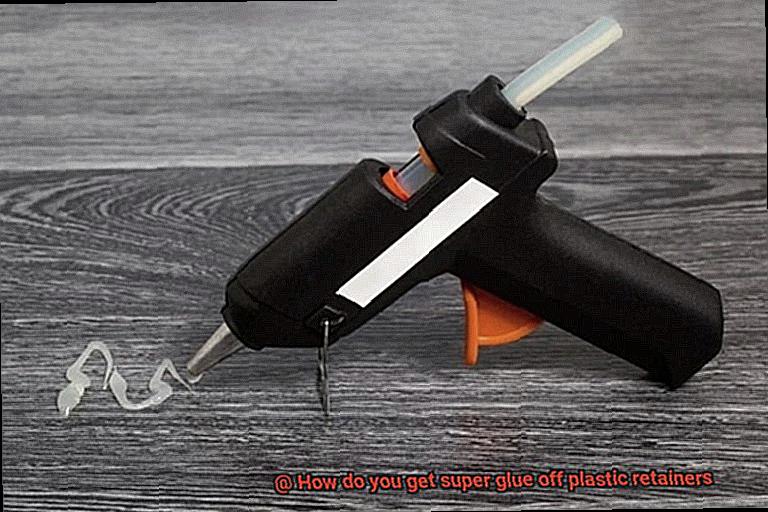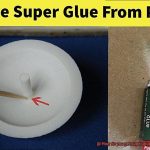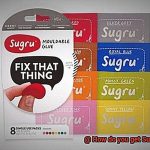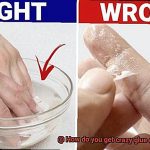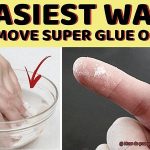Step into any modern kitchen and you’ll likely spot a butcher block, standing proudly as both a functional work surface and a stunning centerpiece. These culinary masterpieces offer the perfect platform for all your chopping, slicing, and dicing needs. But if you’ve ever wondered how to keep that beautiful butcher block securely in place, fear not. The answer lies in the simple yet crucial process of gluing it down.
Now, don’t let the idea of gluing down a butcher block intimidate you. With just a few basic tools, some top-notch adhesive, and a sprinkle of patience, you can create an unbreakable bond between your beloved wooden masterpiece and your countertop. Whether you’re a seasoned DIY enthusiast or just dipping your toes into the world of home improvement projects, we’ve got your back with this step-by-step guide on achieving that perfect bond with finesse.
So grab yourself a cup of coffee (or tea if that’s more your style), roll up those sleeves, and let’s embark on this journey together – it’s time to get gluing.
Before we dive into the nitty-gritty of the process itself, it’s important to understand which type of adhesive will best suit your butcher block. From construction adhesives to epoxy resin, there are several options available depending on your specific needs and preferences. We’ll explore these choices in-depth as we go along so that you can make an informed decision that aligns perfectly with your desired outcome.
Once we have our adhesive sorted out, it’s time to tackle the preparatory steps necessary for a successful glue-down. From cleaning and sanding the countertop surface to measuring and cutting adhesive materials, every detail plays its part in achieving that seamless and everlasting bond. We’ll provide handy tips and tricks along the way to ensure your butcher block stays firmly in place, even with daily use and exposure to heat and moisture.
With the preparation complete, we’ll finally move on to the actual gluing process. We’ll guide you through the art of evenly applying adhesive, avoiding common mishaps like unsightly gaps or excessive glue. And fear not – we won’t leave you hanging when it comes to clamping techniques either. We’ll share valuable insights on how to achieve the strongest bond possible while maintaining an aesthetically pleasing appearance.
Throughout this article, your safety will be our priority. We’ll offer guidance on proper ventilation and
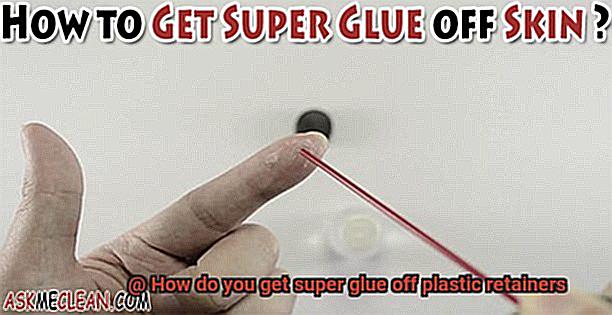
Choosing the Right Adhesive
Contents
A beautiful butcher block can add both style and functionality to any kitchen. However, choosing the right adhesive is crucial to ensure its longevity and stability. With a wide range of options available, selecting the perfect adhesive for your butcher block may seem overwhelming. In this comprehensive guide, we will explore the factors you need to consider when choosing an adhesive and provide step-by-step instructions on how to properly glue down your butcher block.
Factors to Consider:
- Wood Type: Different types of wood require specific adhesives for optimal bonding. Take into account the type of wood your butcher block is made from, such as maple, oak, or walnut, and choose an adhesive specifically formulated for bonding that type of wood.
- Moisture Resistance: Kitchens are prone to moisture exposure, so it’s essential to select an adhesive that is waterproof or water-resistant. This ensures that the bond remains strong even in the presence of water or other liquids.
- Curing Time: Consider your timeline and how soon you need to use the butcher block after gluing it down. Some adhesives have longer curing times, while others offer a quick-drying formula. Choose an adhesive that aligns with your schedule.
- Application Method: The size and shape of your butcher block will determine the most suitable application method for the adhesive. Squeeze bottles or tubes are ideal for precise application, while brushes or rollers allow for easier coverage on larger surfaces.
- Additional Features: Some adhesives offer unique benefits such as stain resistance, odor-free formulas, enhanced flexibility, or impact resistance. Assess these features based on your specific requirements and preferences.
Step-by-Step Process:
- Select a food-safe adhesive specifically designed for bonding wood surfaces.
- Thoroughly clean both the butcher block and the surface it will be attached to using mild detergent and warm water. Ensure they are completely dry before proceeding.
- Apply a thin, even layer of adhesive to one of the surfaces using a brush or roller.
- Carefully place the butcher block onto the glued surface, aligning it properly.
- Apply even pressure across the entire surface area using clamps or heavy objects to ensure a strong bond.
- Allow the adhesive to dry according to the manufacturer’s instructions, typically for at least 24 hours.
- Remove any excess glue that may have seeped out during the bonding process using a damp cloth or sponge.
- To protect and enhance the longevity of your butcher block, apply a food-safe finish or sealant after the adhesive has fully cured.
Cleaning and Preparing the Surfaces
Before you jump into the gluing process, take a moment to learn about a crucial step that can make all the difference – cleaning and preparing the surfaces. This is the secret to ensuring that your butcher block lasts for years to come and remains sturdy and reliable.
Why is cleaning and preparing surfaces important?
- Strong bond: Achieving a strong bond when gluing down your butcher block is essential. By cleaning and preparing the surfaces, you eliminate any barriers, such as previous finishes or residue, that could interfere with the bond.
- Optimal adhesive performance: The cleanliness and smoothness of the surfaces directly impact how well your chosen adhesive will perform. By removing impurities and roughening up the wood, you create an ideal environment for the glue to grip tightly and create a secure connection.
- Aesthetically pleasing finish: Properly cleaning and preparing the surfaces result in a smoother finish. This means fewer imperfections on your butcher block, making it visually appealing and a standout feature in your kitchen.
Steps to cleaning and preparing surfaces:
- Strip away previous finishes: Begin by removing any existing finishes using sandpaper or a chemical stripper designed for this purpose. This step ensures that the adhesive bonds directly with the wood, promoting a reliable connection.
- Thoroughly clean the surfaces: Utilize a mild detergent and warm water to eliminate dirt, grease, or residue from both the butcher block and installation area. Rinse thoroughly and allow them to dry completely for optimal adhesion.
- Sanding for success: Enhance grip by lightly sanding both surfaces. Start with medium-grit sandpaper (around 120-grit) to roughen up the wood, following the direction of the grain. Finish with fine-grit sandpaper (around 220-grit) for a smooth and even finish.
- Bid farewell to dust: After sanding, it is crucial to remove any dust or debris from the surfaces. Utilize a tack cloth or slightly dampened microfiber cloth to wipe away particles, ensuring a clean and dust-free foundation.
Applying the Adhesive
When it comes to applying adhesive to your butcher block, following the proper steps and using the right adhesive is crucial. You want a strong bond that can withstand all your chopping and cutting needs. So, let’s dive into the process of applying the adhesive and ensure a secure attachment.
First and foremost, selecting the appropriate adhesive is key. Opt for a waterproof and food-safe adhesive, like a polyurethane-based glue or a two-part epoxy. These adhesives are not only durable and robust but also safe for food contact, which is essential for a butcher block.
Once you have chosen your adhesive, it’s time to prepare the surfaces. Ensure that both the butcher block and the surface it will be attached to are clean, dry, and free from any dust or debris. If there are any previous finishes or coatings, make sure to remove them for a direct bond.
Now, let’s move on to applying the adhesive. Use a brush or roller to spread a thin and even layer of adhesive on both the butcher block and the surface. Cover the entire surface area, paying extra attention to the edges and corners.
Next, gently place the butcher block onto the surface, ensuring proper alignment. Apply firm pressure to create a strong bond. If needed, utilize clamps or weights to hold the butcher block in place while the adhesive cures.
Now comes the waiting game. Allow the adhesive to cure according to the manufacturer’s instructions. This may take several hours or even days, depending on the type of adhesive used. Patience is key here; ensure that you let the adhesive fully cure before subjecting it to any stress or weight.
Once the adhesive has completely cured, inspect the glued area for any gaps or unevenness. If you notice any imperfections, use a sanding block or chisel to remove excess adhesive and achieve a smooth surface.
Lastly, follow any additional recommendations provided by the adhesive manufacturer. They may include specific cleaning instructions or tips for maintaining the glued area. It’s always wise to heed the advice of the experts to ensure the longevity of your butcher block.
Aligning and Applying Pressure
Today, we are embarking on a deep dive into the captivating world of gluing down butcher blocks. As we all know, a solid foundation is the cornerstone of any project, and the same holds true for our beloved butcher blocks. So let’s explore the significance of aligning and applying pressure during the gluing process, shall we?
First and foremost, alignment is the secret sauce. Picture it as finding the perfect spot for your most cherished piece of furniture – you want everything to come together flawlessly. To start off on the right foot, ensure that the surface you will be gluing your butcher block to is squeaky clean and perfectly level. No pesky dust bunnies or uneven spots allowed.
Once you have your pristine surface ready, it’s time to focus on aligning that butcher block. Place it on the desired spot without any glue and take a moment to adjust its position until it fits like a glove. Pro-tip: utilize measuring tools such as a tape measure or a level to guarantee that you have achieved that coveted perfect alignment.
Now, let’s delve into the world of pressure. Applying pressure during the gluing process is akin to giving your bond a warm bear hug – it enhances the strength and durability of your butcher block. The question now arises: how do you apply this pressure?
One tried-and-true method involves employing clamps. Begin by applying a thin layer of adhesive on both the underside of the butcher block and the surface it will be attached to. With great care, place the block on the surface, aligning it precisely as determined earlier. Then, position those trusty clamps along the edges and gradually tighten them, ensuring they are snug but not overly so. We wouldn’t want any unsightly wood deformation here.
But what if clamps are not at your disposal? Fret not, my friends. We have options aplenty. Heavy objects, such as books or weights, can be strategically placed on top of the butcher block to exert pressure across its entire surface. Just remember to distribute these objects evenly so that your bond receives affection from all sides.
And here’s a little secret for you – there exist specialized adhesives that perform the clamping process for you. These magical products expand during the curing process, applying pressure from within. Simply follow the instructions provided by the manufacturer diligently and witness how these super adhesives work their enchanting wonders.
Oh, and one final nugget of wisdom – patience is an invaluable virtue. Allow ample drying time for the adhesive to cure and bond effectively. Always refer to the recommended drying time specified by the adhesive manufacturer before removing any clamps or weights. After all, we certainly wouldn’t want all your hard work to go down the drain.
Allowing for Proper Drying Time
Butcher blocks are a stunning addition to any kitchen, offering a strong and versatile surface for all your chopping and food preparation needs. However, to ensure that your butcher block stays in pristine condition for years to come, it is crucial to allow for proper drying time when gluing it down. In this blog post, we will delve into the significance of this step and explore the various types of glue used in this process.
One of the primary reasons why allowing for proper drying time is essential is because butcher blocks are typically made from solid wood. As we all know, wood can expand and contract with changes in temperature and humidity. By giving the glue ample time to dry before using the butcher block, you allow the wood to settle and adjust to its new environment. This helps prevent any potential warping or cracking that could occur if the glue were to dry too quickly.
To ensure a successful bond between the butcher block and your countertop or subfloor, it is crucial to choose the right type of glue. Polyurethane or epoxy-based glues are commonly used in woodworking applications due to their excellent adhesion properties and resistance to moisture. These glues create a strong bond that can withstand the rigors of everyday use in the kitchen.
Once you have selected the appropriate glue, it is crucial to follow the manufacturer’s instructions regarding drying time. This can vary depending on the type of glue used, but typically ranges from a few hours to several days. During this time, it is important to avoid exposing the butcher block to excessive moisture or temperature changes, as this can affect the drying process and compromise the integrity of the bond.
While waiting for the glue to dry, take the opportunity to prepare your butcher block for use by cleaning and sealing it. A thorough cleaning will remove any dirt or debris that may have accumulated during installation, ensuring a hygienic surface for food preparation. Applying a sealant or finish will help protect the wood from moisture, stains, and daily wear and tear, prolonging the life of your butcher block.
Removing Excess Glue
Now, let’s tackle the aftermath – excess glue that’s tarnishing the beauty of your addition. No worries, though. As an expert in the field, I’ll guide you through the process of removing excess glue like a pro. Brace yourself for a journey to restore your butcher block’s pristine condition.
Step 1: Patience is Key:
Resist the temptation to tackle the glue immediately. Allow it to dry completely. Depending on the glue type, this may take a few hours to overnight. Though it may seem like an eternity, this waiting period will make the removal process much easier.
Step 2: Scrape it Off:
Once the glue is dry, arm yourself with a plastic scraper or putty knife. Start gently scraping off as much excess glue as possible, starting at one edge and working towards the center. Mindfully protect the surface of your precious butcher block from damage.
Step 3: Wet and Wipe:
With most of the excess glue gone, grab a damp cloth or sponge soaked in warm water. Delicately wipe the surface of your butcher block to eliminate any remaining residue. Remember not to drench the wood with water; moderation is key.
Step 4: Vinegar Solution Magic:
For stubborn remnants clinging to life, mix equal parts white vinegar and water in a spray bottle. Spritz this solution onto affected areas and let it sit for a few minutes to soften the glue. Then, use your trusty damp cloth or sponge to wipe away the softened glue.
Step 5: Sanding SOS:
In rare cases where all else fails and visible traces of glue linger, it’s time for the big guns – sandpaper. Opt for a fine-grit sandpaper and gently sand in the direction of the wood grain. Remember, we don’t want to damage the surface, but simply remove the glue.
Step 6: The Final Touches:
With the excess glue successfully removed, give your butcher block some tender loving care. Thoroughly clean the surface with a clean, damp cloth, ensuring all residue from the cleaning process is gone. Allow it to dry completely before proceeding with sealing or finishing steps.
Applying a Suitable Finish or Sealant
We understand the importance of achieving both visual appeal and long-lasting protection against moisture and stains. Join us as we delve into the world of finishes and sealants, offering expert tips and techniques along the way.
Mineral Oil: The Timeless Classic
- Food-safe and easy to apply
- Penetrates the wood, nourishing and safeguarding it from within
- Simple step-by-step application process ensures optimal results
Beeswax and Mineral Oil: A Winning Combination
- Provides moisture protection and a lustrous finish
- Melt, mix, and apply for a smooth application experience
- Drying and buffing for a glossy and luxurious appearance
Commercial Sealants: The Professional Touch
- Superior defense against moisture and stains
- Essential to carefully read and follow manufacturer’s instructions
- Consider food safety for butcher blocks used in food preparation areas
Tailoring the Finish to Specific Needs:
- High-moisture environments may require more durable finishes
- Decorative pieces or lightly-used blocks may benefit from simpler finishes
- Regular maintenance and reapplication for optimal condition and longevity
Ge56Nf_MBRs” >
Conclusion
To properly glue down a butcher block, you need to follow a few key steps. First, ensure that the surface is clean and free of any debris or dust. Next, apply a generous amount of wood glue to the underside of the butcher block. Spread it evenly using a notched trowel to create ridges for better adhesion.
Once the glue is applied, carefully place the butcher block onto the desired surface, making sure it aligns perfectly. Apply pressure evenly across the entire surface to ensure a strong bond. You can use clamps or heavy objects to hold it in place while the glue dries.
It’s important to note that using an adhesive specifically designed for wood will provide better results. These adhesives are formulated to withstand moisture and temperature changes, ensuring long-lasting durability.
After allowing sufficient drying time as specified by the adhesive manufacturer, remove any excess glue with a damp cloth or scraper. Sand down any rough edges or imperfections for a smooth finish.
Remember, proper gluing technique is crucial in ensuring your butcher block stays securely in place for years to come.

